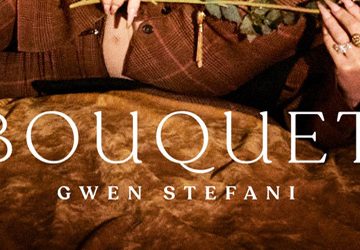Roddy Frame is definitely one of the finest and most proficient singers-songwriters in the ’80s/’90s Guitar Pop/New Wave world. Not only does he sing well and write beautiful songs; he has also wizard hands in weaving complex chords and ornate shapes with his guitar. His star shines up there alongside those of Johnny Marr of The Smiths, Paddy McAloon of Prefab Sprout, Stephen Duffy of The Lilac Time, and Glen Phillips of Toad the Wet Sprocket. Each of these modern troubadours has been prolific not only as the frontman of his respective band, but also as a solo artist.
Frame is the founder of Aztec Camera, which was formed in 1980, in East Kilbride, South Lanarkshire, Scotland. In the English band’s albeit relatively short existence—15 years—Frame, with his comrades, has released six studio albums – from 1983’s High Land, Hard Rain to 1995’s Frestonia. He embarked on a low-profile solo career immediately after the release of Aztec Camera’s last album, coming up with equally brilliant gems under his own name. However, anyone who is familiar with the style of Frame, as well as with his entire musical outputs under Aztec Camera and also on his own, will surely agree that the brilliance and splendor of his music sparkles the brightest in Aztec Camera’s very first full-length, which now celebrates 35 years.
Released on April 19, 1983, on Rough Trade/Sire Records, Aztec Camera’s High Land, Hard Rain was oozing with youthful vigor and jangly sheen. It opened with the cool, assured, and smooth swagger of “Oblivious,” which had straightaway highlighted Frame’s superb skill in song structuring and in combining melody and intricacy in playing the guitar. With the ensuing stomper “The Boy Wonders,” Frame and his fellow cameramen—Bernie Clark (piano, organ), Campbell Owens (bass), and Dave Ruffy (drums, percussion)—were able to prelude their brand of New Wave/Jangle Pop with strings and plucks of Scottish/Celtic music; something that even Morrissey had tried to emulate, albeit in faint traces, in his single “The Boy Racer.” Followed next was not only the album’s high point but also of Aztec Camera’s entire music – the breezy, melodramatic, and energetic “Walk Out to Winter,” which featured one of Frame’s most intricate guitar interludes. The Sophistipop mid-tempo “The Bugle Sounds Again” then relaxed the atmosphere, lullabying the listener with Frame’s serenade-style of singing and with the song’s swinging cadence and pulsating basslines.
The melodrama continued with the slightly dark streak of “We Could Send Letters,” which epitomized Frame’s penchant for complicated strumming structures and unusual chord progressions and yet maintaining his songs’ Pop sensibilities. Aztec Camera then returned the listener to the overall cheery sonic theme of the album as they launched into the sunny, angular, and upbeat “Pillar to Post.”
“Release” was a delectably sweet change of phase and style – jazzy, Flamenco, Bossa Nova, loungy, sophisticated. Another trademark celebratory sound of Aztec Camera played next in the form of the dancey, marching New Wave Pop of “Lost Outside the Tunnel,” effectively animated by its restlessly cascading bass melodies, crisp guitar jangles, ghostly keyboard flourishes, eerie percussive elements, and Frame’s distinct nasal croons. The penultimate track, the Gospel-tinged “Back on Board,” toned down the ambience; Frame and comrades were certainly back on courting mode, foreshadowing a sense of sentimentality that would permeate in a more pronounced manner in Aztec Camera’s subsequent releases.
Finally, Frame wrapped up High Land, Hard Rain single-handedly, with the guitar-vocal beauty of the folky “Down the Dip,” which hinted on Frame’s future dalliances with acoustic-based, Folk-oriented music.
Of Aztec Camera’s six-album discography, High Land, Hard Rain remains the epitome of the band’s sunny, jangly, and upbeat music. After all, it was the firstborn and the one that catapulted the then very young Frame (only 19 years old at the time) to instant legendary status, earning for him and Aztec Camera a rightful place in the pantheon of other New Wave/Indie Pop greats that had a similar stylistic trajectory and, sadly, the same short-lived career, such as The Smiths (“This Charming Man”), Orange Juice (“I Can’t Help Myself”), and The Wild Swans (“Young Manhood”). While you await whatever the still active Frame is secretly concocting these days, revisit for the meantime the 35-year-old High Land, Hard Rain, which is definitely a picturesque postcard from a bygone but unforgettable era. Then, after this momentary delight on the backwards, move forwards from the crying scene as you craze your hair and shine your shoes, and kiss the kiss that you almost lost. For somewhere in your heart, the love for Aztec Camera is surely still on fire. All you need is….






No comment